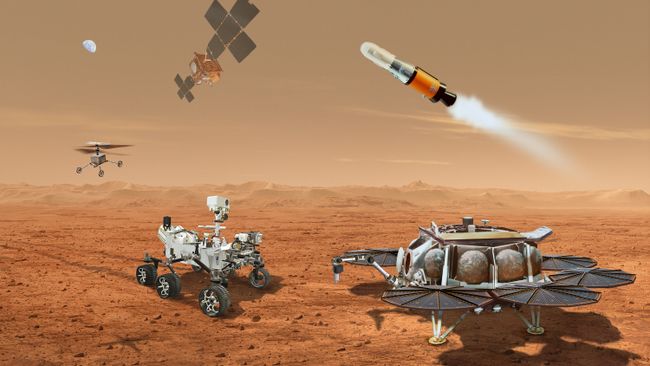The agency is looking for ways to reduce the mission's budget while maintaining priority
NASA is looking for new ways to deliver samples from Mars to Earth. These samples, collected by the Perseverance rover from Jezero Crater, where a lake and river delta were located billions of years ago, provide valuable scientific material.
Recovering and analyzing samples from Mars is one of NASA's key scientific missions. It will provide a unique opportunity to obtain information about the composition and history of Mars, including possible traces of past life. However, delays and cost overruns make the current sample return (MSR) architecture impractical, agency officials said April 15.
«The $11 billion cost is excessive and the timeline to 2040 is unacceptably long», — noted the head of NASA, Bill Nelson.
An expert panel that conducted a study last September estimated the total cost of MSR at nearly $3 billion, significantly lower than the initial estimate. However, the current architecture does not allow samples to be delivered until 2040 due to budget constraints and the need to preserve other science projects, such as the Dragonfly mission to Saturn's moon Titan.
The Perseverance rover was originally scheduled to carry samples to a lander, where they would be picked up by a Mars Ascent Vehicle (MAV) rocket, and then returned to Earth. But NASA is now looking for ways to cut costs and speed up the process. The cost savings will help the agency's other science projects, and the faster timeline could help plan crewed missions to Mars.
«2040s — this is the decade when we are going to land astronauts on Mars», — Nelson stated.
NASA turned to the Jet Propulsion Laboratory (JPL) in Southern California — to its leading center for robotic planetary exploration — and to its other research centers for new ideas for MSR. In addition, the agency invites the commercial sector to participate in the development of new concepts. Applications will be accepted until May 17, with the goal of starting a new phase of the project by early next year.
The final form of the new MSR architecture is not yet clear; the project remains a priority for NASA, despite the complexity of the task.

